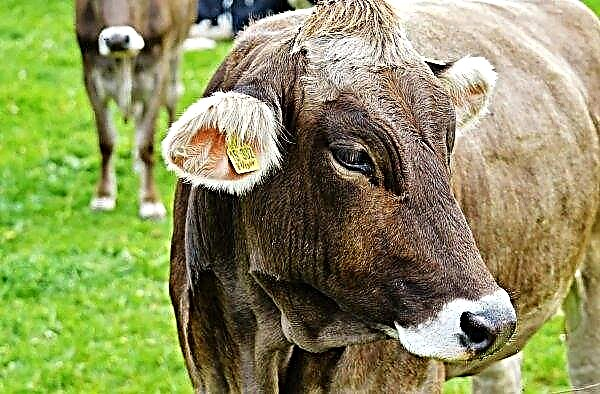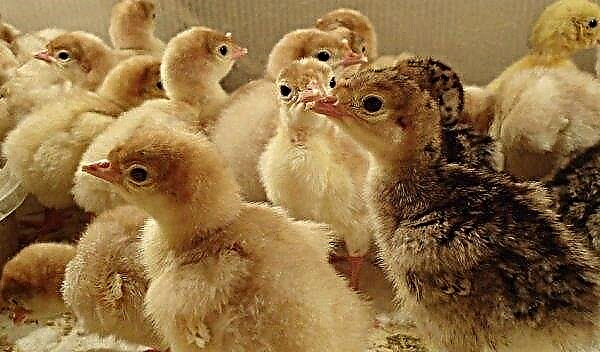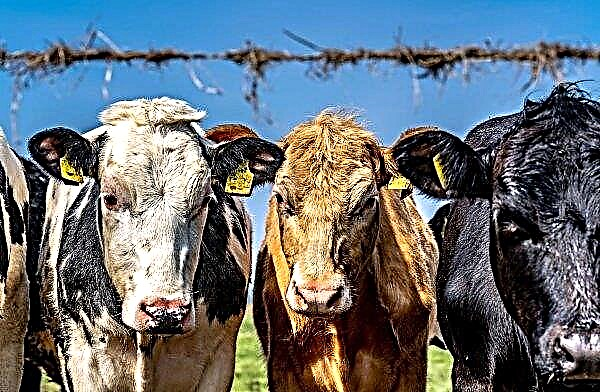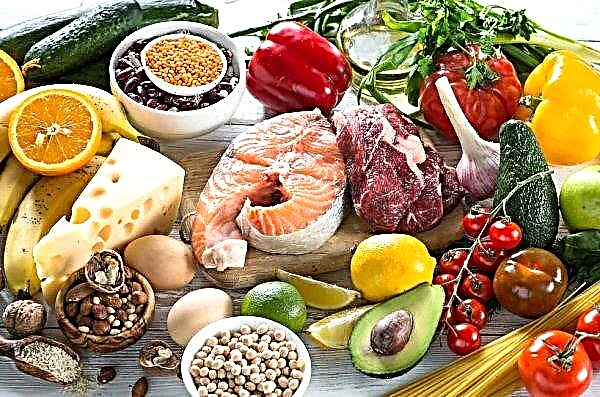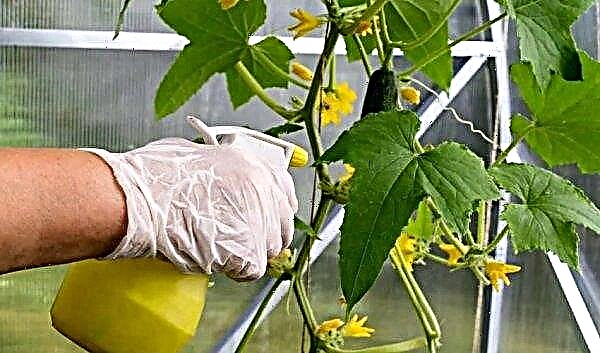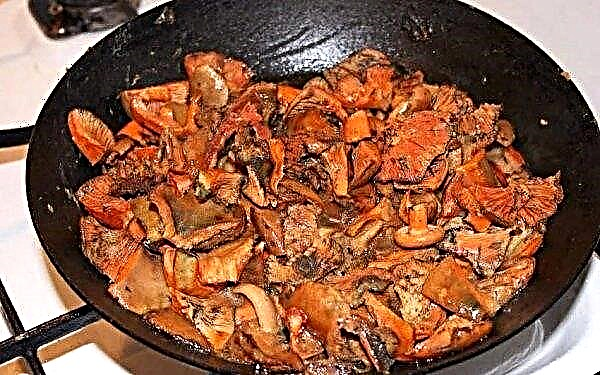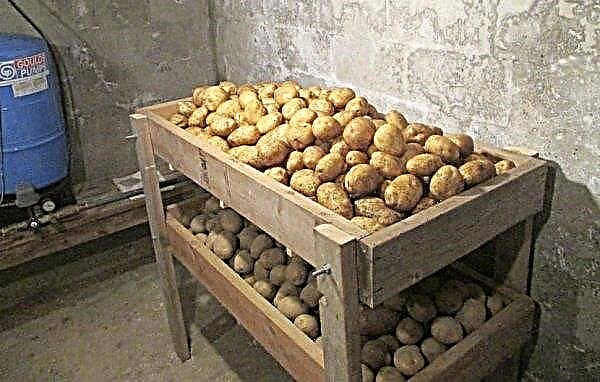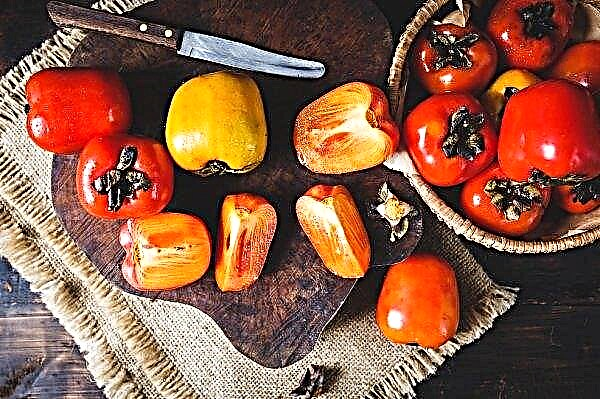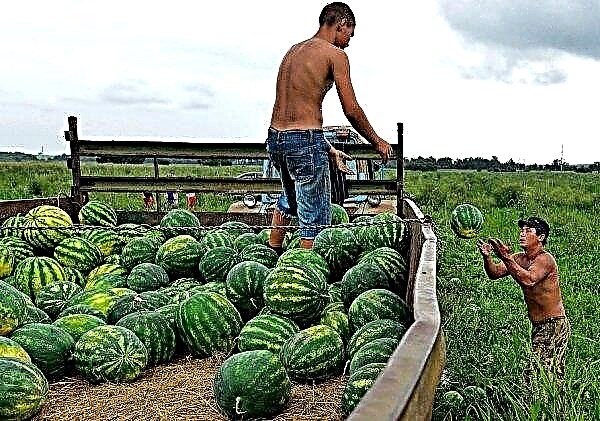Many gardeners prefer not to spend a lot of time caring for tomatoes in open ground or in greenhouses. Here unpretentious determinant types of tomatoes will come to their aid, not needing pinching and garter. Such crops include the Buyan tomato variety. Consider the characteristic features of this variety, its growing technology, what diseases and pests can be affected and the fight against them.
Characterization and description of the variety
This variety was bred by Siberian breeders and showed itself well in a cool climate.
For the variety "Buyan" is characterized by the following:
- it refers to early ripening ripening, as its fruits begin to be harvested 100 days after emergence;
- is a determinant type, and its bush grows no higher than 0.5 m;
- it does not need to be stepson;
- strong, thick stems and branches are medium leafy;
- potato leaves are large and dark green in color;
- inflorescences grow every two leaves;
- the fruits are plum-shaped;
- the mass of tomatoes can be from 70 g to 180 g;
- unripened green tomatoes with dark spots, ripening, depending on the variety, acquire saturated red or yellow color;
- the peel is glossy, smooth;
- has a dense flesh of sweet and sour taste, a small number of seeds;
- the fruits are not stored for long;
- medium resistant to bacterial infections and does not suffer from the tobacco mosaic virus;
- high productivity - from 1 m² you can collect about 8 kg.
Did you know? For high resistance against adverse conditions tomato variety «Buyan» It has another name - Fighter. Those who planted these tomatoes at risk of cold snap speak very well of their ability to withstand a sharp drop in temperature.
Pros and cons of the variety
- The Buyan tomato variety has the following advantages over other varieties:
- Does not need garter and stepsoning;
- resistance to drought, cold snap and temperature changes;
- the ability to grow both in open and in closed ground;
- it is not a hybrid, and there is an opportunity to stock up on seeds themselves;
- early ripening of fruits;
- high productivity;
- great taste;
- universality of purpose;
- small fruits suitable for whole preservation.

- This variety has several disadvantages:
- its fruits do not have good keeping quality;
- they may begin to crack when there is a lack of light, a large number of fruits, excess moisture, or an excess of fertilizer.
In this case, it is necessary to reduce watering and top dressing, to check the optimality of lighting in greenhouses.
Planting and growing tomatoes at home
In the southern regions, this variety can be grown by immediately sowing seeds on the beds. However, in most areas, the tomato culture is grown in seedlings. Many gardeners often grow seedlings at home, and some grow it in a greenhouse.

The optimal microclimate for growing
Since tomatoes are photophilous plants, a well-lit place should be chosen to grow their seedlings. At home, this is a window facing south, east or west. The beds and facilities for planting should also be selected in sunny places. Optimum daylight hours should be at least 12 hours.
Did you know? In greenhouses, mustard is planted between the bushes to protect tomatoes from diseases and improve the soil.
For sprouts, a temperature of +25 ºС is suitable, and when they grow up it is enough to maintain +20 ... + 22 ºС during the day and +16 ... + 17 ºС at night. When ripening tomato fruits, the temperature should be slightly higher - +24 ... + 26 ºС, and at night not lower than +17 ... + 18 ºС. It is very important to ensure that the temperature does not rise to +30 ºС and higher, since under such conditions tomatoes lose their ability to set fruits. To reduce the temperature to normal, the greenhouse needs to be ventilated.

A polycarbonate greenhouse should have at least 3 windows for ventilation, and they should be not only lateral, but also upper. Optimally, if the greenhouse is equipped with a thermometer, a hygrometer and an automatic ventilation system in case of exceeding the set temperature. When growing a crop during short day periods, lighting needs to be established.
The best soil moisture for tomatoes is 70%, and for air - 60%.
Sowing preparation
To grow seedlings, you can buy ready-made soil, or you can make such a mixture yourself - mix chernozem from the garden with purchased land. For better friability, you can add sand and vermiculite to them. Whatever soil you choose, its acidity should be in the range of 6-7 pH.
Before planting, disinfect the soil and planting material. At home, soil disinfection can be done by calcining it in the oven or by watering it with 3% solution of copper sulfate a few days before planting. In the greenhouse, remove the top layer of the earth (about 10 cm). Disinfect the surface of the greenhouse with a 1% solution of copper sulfate (if you did not do this in the fall) and spray the soil with a less saturated solution (5 g of copper sulfate per 10 l).

To replace the upper greenhouse soil, you can prepare a fertile mixture of chernozem and humus in a ratio of 1: 1. About 4 kg of ash and 0.5 kg of ammonium nitrate are added to each cubic meter of soil mixture. Acidic soil should be liming.
Tomato seeds are soaked in saline (1 tbsp.spoon of salt per 1 liter of water) and unfit popped seeds are removed. If the seeds were collected from healthy fruits, then they can already be soaked by wrapping in wet gauze. When there is doubt about the seed, then before that it should be soaked in a light solution of potassium permanganate for 20-30 minutes, and then washed with water. Such seeds should be held in the stimulants before sowing (for example, Epine).
Sowing technology
Sowing seeds to obtain seedlings of tomato varieties "Buyan" is carried out in late March - early April.
Important! When sowing seeds, it should be noted that seedlings of early ripe varieties are planted in a permanent place at the age of 50–55 days from the appearance of seedlings.
Seeds are planted in moistened soil by about 1-2 cm, and again moistened from the top with a spray bottle. Then the landing container is covered with a film and put in a warm place. It is aired daily, while checking the humidity. When the shoots appear, the film is removed, and the container with tomatoes is transferred to a lighted place. They monitor the moisture of the soil and feed 2-3 times for the entire period. In phase 2-3, dive into a separate container. A couple of weeks before planting, seedlings are quenched.
Planting seedlings in a permanent place
Seedlings are planted in open ground when the weather is warm, and at night the temperature will not drop below +8 ºС. The bed for it needs to be selected and prepared since the fall.

Determinant varieties are usually planted with row spacings of 0.5–0.6 cm and the distance between plants in a row of 40 cm. You can plant staggered 40 × 40 cm. The same patterns can be followed when planting in a greenhouse. Bushes in limited conditions of protected ground can be slightly thickened, but keep in mind that no more than 8 Buyan tomatoes must be on 1 m².
- The best precursors for tomatoes are:
- cabbage;
- bow;
- carrot;
- zucchini.
Important! You should not plant a tomato two times in a row at the same place or after other solanaceous vegetables (potatoes, eggplant, peppers). Their cultivation in greenhouses should be alternated with cucumbers.
How to care for tomatoes
Grade "Buyan" is undemanding in care.
Feeding and watering
The first top dressing is introduced 10 days after planting seedlings with mineral fertilizers containing nitrogen and calcium.

During the appearance of tomato fruits, potash fertilizers are used. You can use organics (rotted manure and chicken droppings). Watering should be carried out with warm and standing water in the morning or in the evening.
Tying and shaping a bush
Bushes of tomato "Buyan" reach no more than 50 cm, form strong bushes that do not need a garter.
Soil loosening
To increase productivity, it is recommended to loosen the soil to improve air exchange. During loosening, weeds should be removed that prevent the tomatoes from developing and pull nutrients from the soil. The soil is loosened after watering or rains, while doing this, hilling the bush.

You can do without loosening, and mulch the ground around the tomato bush with straw or peat. Such a process will retain moisture in the soil, protect the plant from drying out and will prevent the appearance of weed grass.
Diseases and pests
Tomatoes of the Buyan variety are quite resistant to many diseases.
But this variety can be subject to the following diseases:
- Late blight. A prerequisite for the appearance of this disease is increased air humidity due to heavy and frequent rains, as well as temperature spikes. The fruits and leaves are affected - they acquire a brownish color. Copper preparations are good for phytophthora.
- Gray rot. It appears in the form of dark brown spots on the fruits. The reason is often a lack of calcium, as well as moisture due to poor watering. With this problem, it is recommended that calcium nitrate be treated.
Therefore, it is very important to timely apply preventive measures against the appearance of diseases and pests:
- carry out weeding from weeds and weeds;
- mulch and loosen the soil, do the hilling of each bush;
- timely pour warm water in the morning or in the evening;
- to add natural and mineral fertilizers within the normal range to strengthen the tomato;
- tops, stalks and unfit fruits should be destroyed;
- the ground must be dug up, as it contains pest larvae;
- disinfect the soil before disembarkation;
- observe crop rotation.
Harvesting and storage
Harvest fruits begin to be harvested approximately 3 months after planting by seeds. This is usually the end of July or the first half of August. From one square meter, you can get 8-10 kg of tomatoes. Fresh tomato is not stored for long. The shelf life of ripe tomatoes is not more than 4-5 days before ingestion. But this variety is perfect for conservation, which will allow the whole winter to enjoy tomato juice, ketchup, pickled and salted tomatoes.

The Buyan tomato variety is unpretentious and does not require special care; it tolerates cold snap. It is well suited for growing in greenhouses and garden beds. Its fruits have excellent taste, suitable for salads and any preservation, for whole salting.



